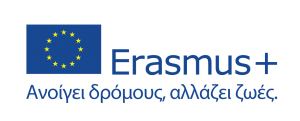Αρχική » Άρθρα με ετικέτα 'TPM' (Σελίδα 2)
Αρχείο ετικέτας TPM
Romani Dictionary in Greek
Romani dictionary in Greek ΙΩΑΝΝΗ ΓΕΩΡΓ. ΑΛΕΞΙΟΥ ΛΕΞΙΚΟ_ΡΟΜΑΝΙ During the TPM in Kos Greece, Gymnasio Zipariou presented the dictionary and participants discussed similarities with Roma language in their countries
TPM 3 Kos Questionnaire on Children’s rights
During the TPM in Kos Greece, Gymnasio Zipariou presented the educational activity for Children s Rights in Google Forms, a multiple choice exercise. Teachers at Gymnasio Zipariou regard Roma population as any other vulnerable population whose rights are not respected Students answer a Google Forms about Children’s rights according to UNICEF Convention on Children’s rights. […]
Multiple choice Exercise on Children’s rights
During the TPM 3 in Kos Greece, teachers from Gymnasio Zipariou presented a learning object on Human Rights, including Roma students and other minorities that was designed during Erasmus project at their school. The learning activity is in H5P platform and gives a score to students to evaluate their knowledge. Students complete the exercise about […]
Access to Early Childhood Education and Care for Roma children
The Council Recommendation on high-quality Early Childhood Education and Care (ECEC) systems underlines the importance of access to ECEC services for all children and recalls that quality ECEC can be “an effective tool to achieve educational equity for children in a disadvantaged situation, such as some migrant or ethnic minorities (for example Roma)”. It can provide Roma […]
Roma Factsheet Hungary
factsheet_hungary_en
Roma Factsheet Portugal
factsheet_portugal_en
Roma Factsheet Italy
factsheet_italy_2014_en
Roma Factsheet Bulgaria
factsheet_0 bg
Roma in Italy, Roma in Reggio Calabria
The Roma Of Italy THE CONDITION OF ROMA, SINTI AND CAMINANTI COMMUNITIES IN ITALY The Roma, Sinti and Caminanti (RSC) communities in Italy are characterized by the heterogeneity of the groups, by their linguistic-dialectal variety, as well as by different cultures. The various attempts over the years to promote integration, inclusion and their recognition as […]
Italian educational system
Stages of the education system The Italian education and training system includes ECEC (0-3 and 3-6), primary, secondary, post- secondary and higher education. Early childhood education and care (ECEC) ECEC for children aged less than 3 years is offered by educational services (servizi educativi per l’infanzia) ECEC for children aged from 3 to 6 years […]





